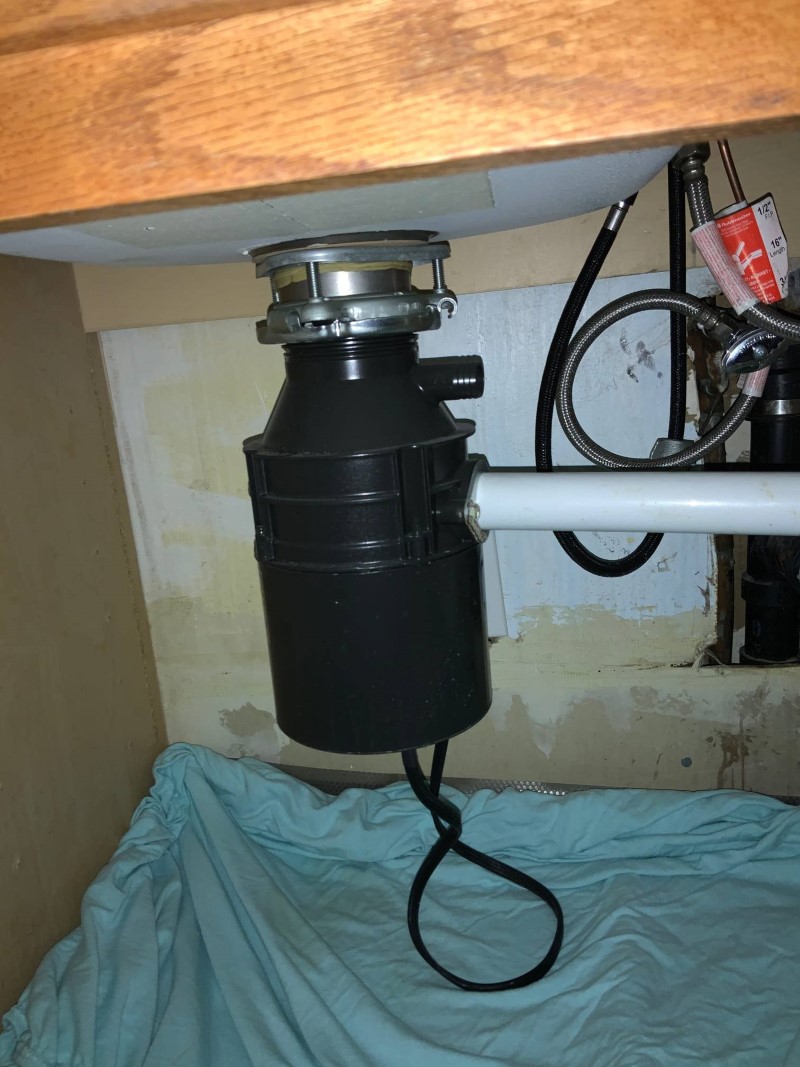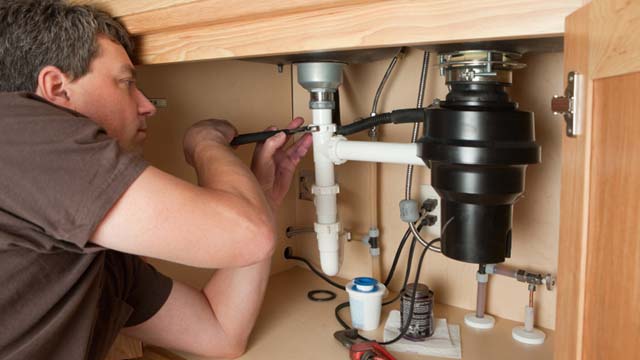What are your ideas about How to fix a pretty consistent leak from my garbage disposal?

Garbage disposals are crucial cooking area home appliances that assist in getting rid of food waste successfully. Nonetheless, a dripping waste disposal unit can be an aggravating and untidy issue to deal with. The good news is, several leaks can be dealt with quickly with a couple of simple steps. In this write-up, we will certainly go over just how to repair a dripping garbage disposal effectively.
Intro
Garbage disposals are set up under cooking area sinks and are created to shred food waste right into smaller sized items, enabling it to pass through the plumbing system easily. While these devices are normally trustworthy, leaks can take place over time as a result of wear and tear, loosened links, or damages to the system.
Common Root Causes Of Leaks in Trash Disposals
Worn Seals and Gaskets
Seals and gaskets play an important function in preventing water from leaking out of the waste disposal unit. Gradually, these elements can degrade, resulting in leaks around the disposal system.
Loose Connections
The connections between the waste disposal unit and the plumbing system can become loose over time, triggering water to leak out throughout operation.
Cracks or Openings in the Disposal System
Physical damage to the waste disposal unit, such as cracks or holes in the real estate, can also result in leaks.
Determining the Resource of the Leakage
Prior to trying to take care of a dripping garbage disposal, it is necessary to recognize the source of the leakage. This can commonly be done through aesthetic inspection or by conducting simple tests.
Visual Evaluation
Examine the waste disposal unit system meticulously for any type of indications of water leak. Pay attention to areas around seals, gaskets, and connection factors.
Testing for Leaks
One means to check for leaks is by running water via the disposal device and checking for any noticeable indicators of leak.
Tools and Products Needed for Taking Care Of a Leaking Garbage Disposal
Prior to beginning the repair work process, collect the needed tools and materials, consisting of a screwdriver, flexible wrench, plumbing professional's putty, substitute seals or gaskets, and epoxy or patching material for repairing cracks or openings.
Step-by-Step Overview to Dealing With a Leaking Garbage Disposal
Shut off the Power
Before attempting any repairs, make certain that the power to the waste disposal unit system is shut off to stop the danger of electrical shock.
Locate the Leak
Identify the specific area of the leak and establish the reason.
Tighten up Links
Make use of a wrench to tighten any type of loosened links in between the disposal device and the pipes system.
Change Seals or Gaskets
If the leakage results from worn seals or gaskets, get rid of the old components and replace them with new ones.
Patching Fractures or Holes
For cracks or openings in the disposal system, use epoxy or a suitable patching material to seal the damaged location.
Checking the Waste Disposal Unit After Fixing
When the repair is total, examine the garbage disposal by running water through it to make sure that the leak has been dealt with.
Preventive Upkeep Tips to Prevent Future Leakages
To prevent future leakages, it is vital to do regular upkeep on your garbage disposal. This includes keeping it clean, avoiding placing non-food items or tough items down the disposal, and occasionally looking for leakages or other issues.
Final thought
Finally, taking care of a dripping waste disposal unit is a relatively straightforward process that can be finished with basic tools and products. By complying with the steps laid out in this write-up and practicing preventive upkeep, you can maintain your garbage disposal in good working condition and stay clear of expensive repair services in the future.
What to Do About a Leaking Garbage Disposal
A leaking garbage disposal often goes unnoticed until you confront a sopping cabinet, a foul-smelling puddle, or an audible drip-drip-drip from the unit. The fix can be frustrating, too, because the leak can stem from a number of components in the system. Fortunately, with a little sleuthing, you can zero in on the leak and—depending on the exact location—stop the icky oozing and repair the component that caused it. Worst case scenario, if it turns out that the garbage disposal must be replaced, installing a new one is a reasonable do-it-yourself task for those with basic plumbing skills. Read on to keep the cash you’d otherwise hand over to a pro.
Prepare to find the leak
Prior to testing the garbage disposal for leaks, unplug it at the wall outlet and turn off the power from the breaker box to prevent electrical shock. Then insert a watertight sink stopper into your sink drain and wipe the unit dry with a clean cloth. In any handy container, mix a few drops of food coloring into a few cups of water, and pour the dyed water onto the sink stopper to help you locate the leak.
Investigate the source
the top, where the disposal meets the sink drain the side, where the dishwasher hose or main drain pipe connects to the disposal or the bottom of the unit Inspect each of these locations while gliding a light-colored rag over the unit; the dyed water will readily show on the rag and reveal the location of the leak. If a leak isn’t immediately apparent, remove the sink stopper and pour a few more cups of dyed water down the sink drain, then check for leaks again. Leaks near the top of the unit are more likely to show themselves while the sink is plugged, while side and bottom leaks are more noticeable while the sink is unplugged.
The metal sink flange that sits directly inside the sink drain is typically sealed around the top with plumber’s putty (a clay-like sealant) and then secured from under the sink with bolts. If the plumber’s putty deteriorates, or the bolts loosen, the flange can no longer form a watertight seal between the sink drain and the disposal—which could cause a leak at the top of the unit.
To reseal the leaky flange, you must first detach the garbage disposal. Start by loosening the screws securing the main drain pipe to the disposal, then loosen the screws in the metal clamp securing the dishwasher hose to the disposal and detach the drain pipe and dishwasher hose from the disposal. Loosen the screws in the mounting ring that connects the disposal to the metal mounting assembly beneath the sink, then pull down the disposal and carefully set it on a clean, dry surface. Loosen the bolts in the mounting assembly with a wrench, then pull down the mounting assembly and set it near the disposal.

I am very focused on Tips on Fixing a Leaking Garbage Disposal and I hope you enjoyed the entire blog post. Are you aware of another person who is interested in the niche? Feel free to share it. Thank you so much for your time invested reading it.
Services